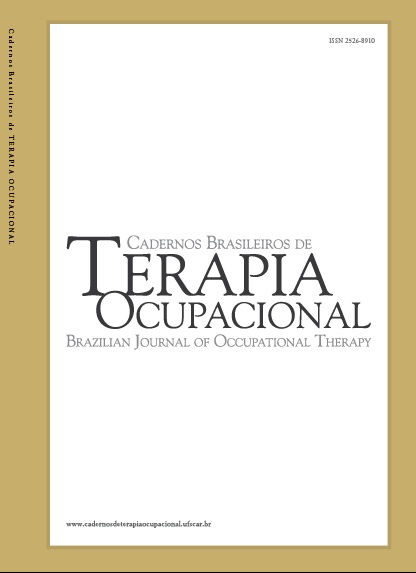Hand exoskeleton for people with mild hemiparesis: a descriptive study on its creation, the first evidence of use and reflections on contributions of occupational therapy
DOI:
https://doi.org/10.1590/2526-8910.ctoAO399038771Keywords:
Paresis, Occupational Therapy, Motor Skills, Exoskeleton Device, Equipment DesignAbstract
Introduction: Occupational therapists, concerned with avoiding prolonged movement deprivation in individuals with mild hemiparesis, seek to develop and implement techniques that promote neuroplasticity and restore functionality. In addition to procedures used in conventional approaches, robots and exoskeletons have been widely employed in recent decades. Objective: To describe the development and results of the initial tests of a hand exoskeleton designed for individuals with mild hemiparesis, highlighting the contributions of occupational therapy in the construction process carried out by a multidisciplinary team. Method: The study is organized in two stages. The first presents the context and the theoretical-methodological foundations adopted for the product’s development, highlighting the construction process and the contributions of occupational therapy—thus comprising a theoretical-practical phase. The second presents preliminary evidence from the tests of the prototype and its use by two individuals with mild hemiparesis. Results: An electromechanical hand exoskeleton was developed, powered by a battery and featuring mechanical traction through a pulley and traction wire system. The tests and preliminary evidence of its use took place through a motor learning program in occupational therapy for individuals with hemiparesis. The results suggest that this is a promising approach, as it facilitates grasping, reaching, and releasing movements, thereby enhancing participation in daily occupations. Conclusion: This reported experience highlights the actions and contributions of occupational therapy in the collective process of problem-solving and the early-stage development of a hand exoskeleton for individuals with mild hemiparesis.
Downloads
Published
How to Cite
Issue
Section
License
Copyright (c) 2025 The Authors

This work is licensed under a Creative Commons Attribution 4.0 International License.


